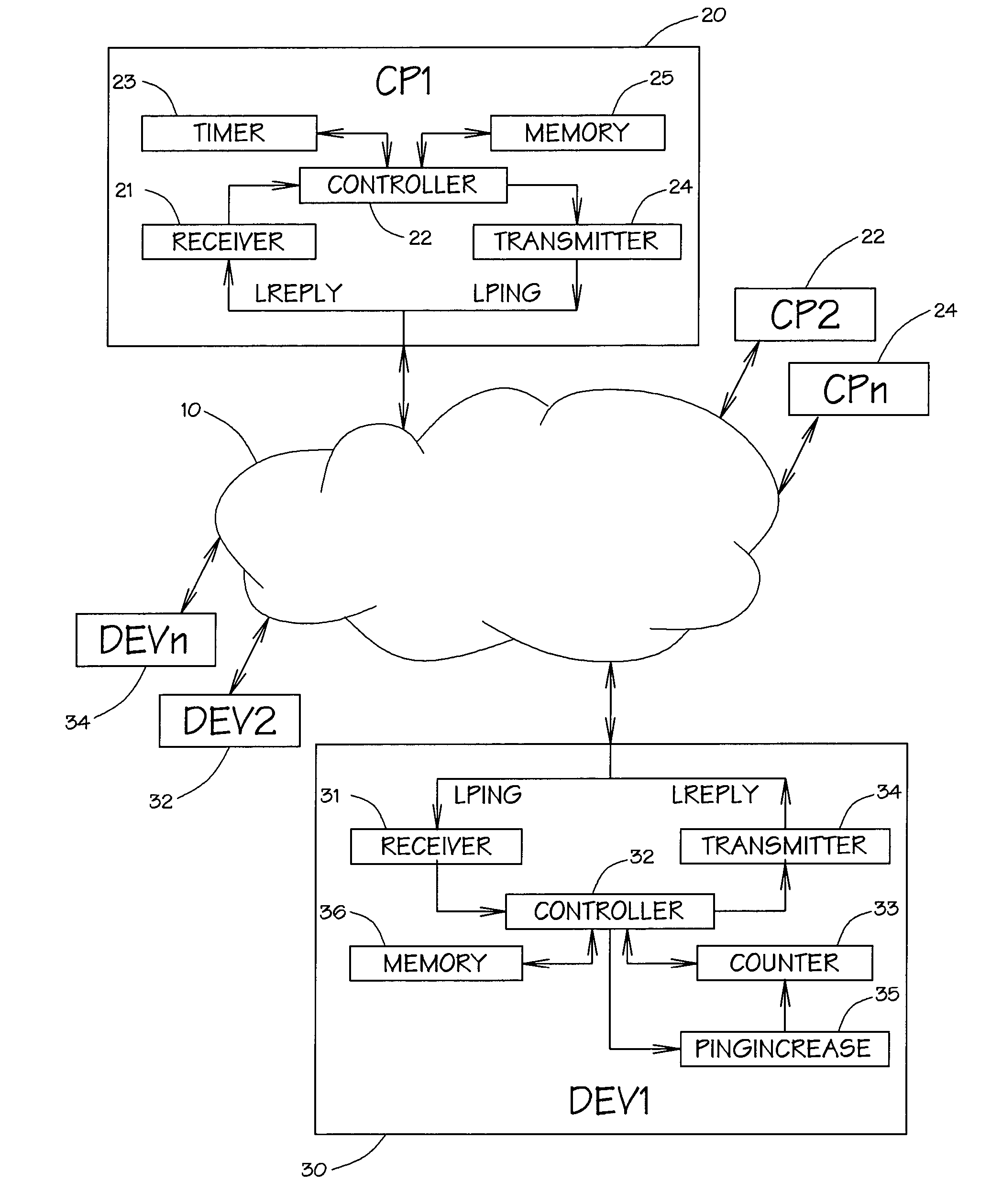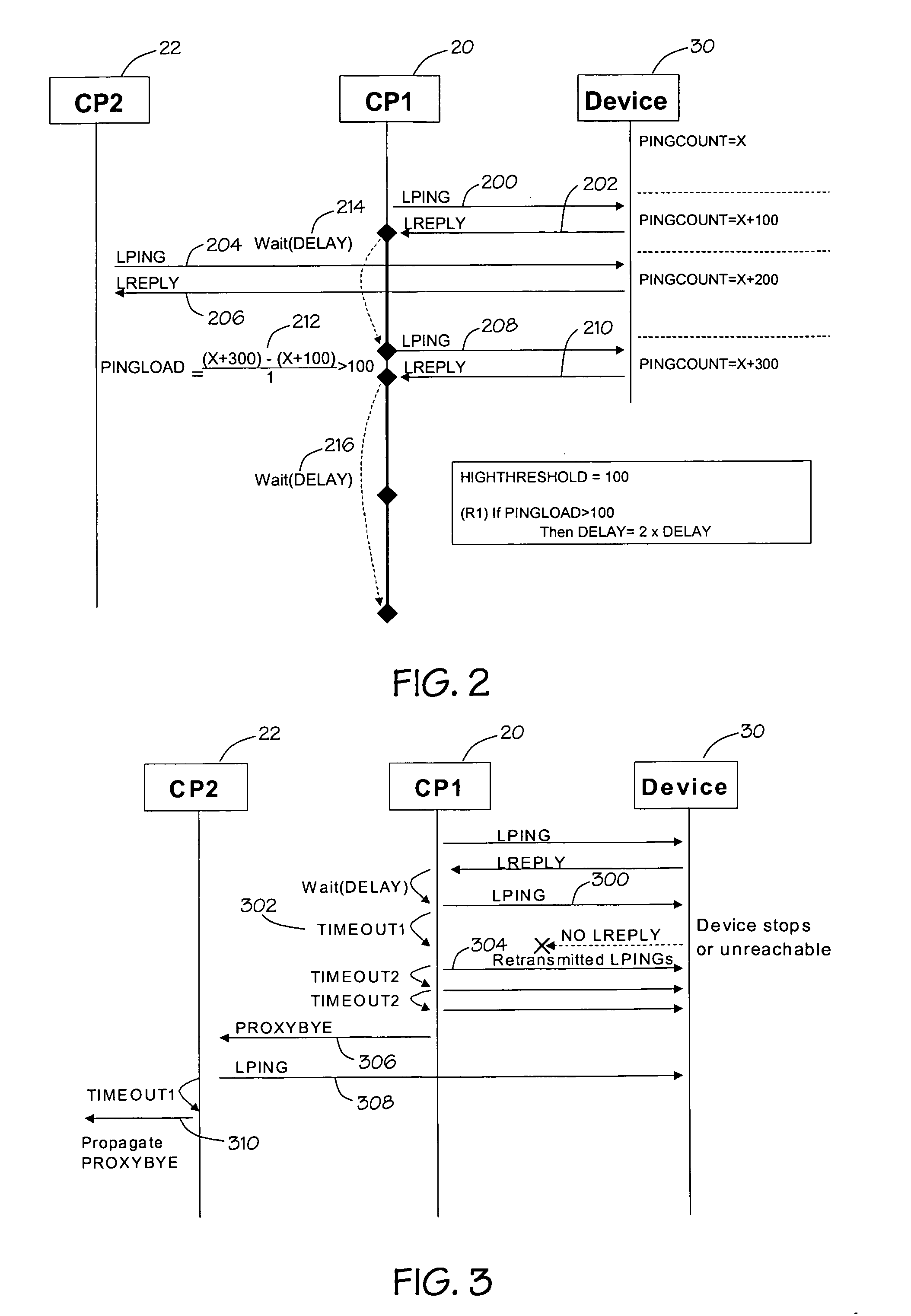Liveness protocol
a protocol and liveness technology, applied in the field of liveness protocols, can solve the problems of frequent changes in topology, low reliability of wireless networks, and low bandwidth, and achieve the effects of limited processing and memory capabilities of devices, low reliability, and low bandwidth
- Summary
- Abstract
- Description
- Claims
- Application Information
AI Technical Summary
Problems solved by technology
Method used
Image
Examples
Embodiment Construction
A Liveness Ping Protocol may be defined for a network 10 that includes clients 20 and devices 30 as shown in FIG. 1, such as a UPnP™ (a certification mark of the UPnP Implementers Corporation) network. The Liveness Ping Protocol may allow clients 20 to determine what devices 30 are reachable while controlling the overhead of the protocol on each device. If a client 20 wants to check a particular subset of devices 30, it may start a session of the Liveness Ping Protocol for each device to be checked. Clients 20 may be able to change that subset at will. A client may not be forced to use Liveness Ping Protocol. In an exemplary embodiment, the subset of devices may be allowed to be empty.
A client may check for the presence of a device by sending an LPING message, which may be sent using unicast User Datagram Protocol (UDP). The device may reply with an LREPLY message, which may be in a UDP unicast packet. If the client does not receive a reply before a timeout, it may retransmit the L...
PUM
 Login to View More
Login to View More Abstract
Description
Claims
Application Information
 Login to View More
Login to View More - R&D
- Intellectual Property
- Life Sciences
- Materials
- Tech Scout
- Unparalleled Data Quality
- Higher Quality Content
- 60% Fewer Hallucinations
Browse by: Latest US Patents, China's latest patents, Technical Efficacy Thesaurus, Application Domain, Technology Topic, Popular Technical Reports.
© 2025 PatSnap. All rights reserved.Legal|Privacy policy|Modern Slavery Act Transparency Statement|Sitemap|About US| Contact US: help@patsnap.com



